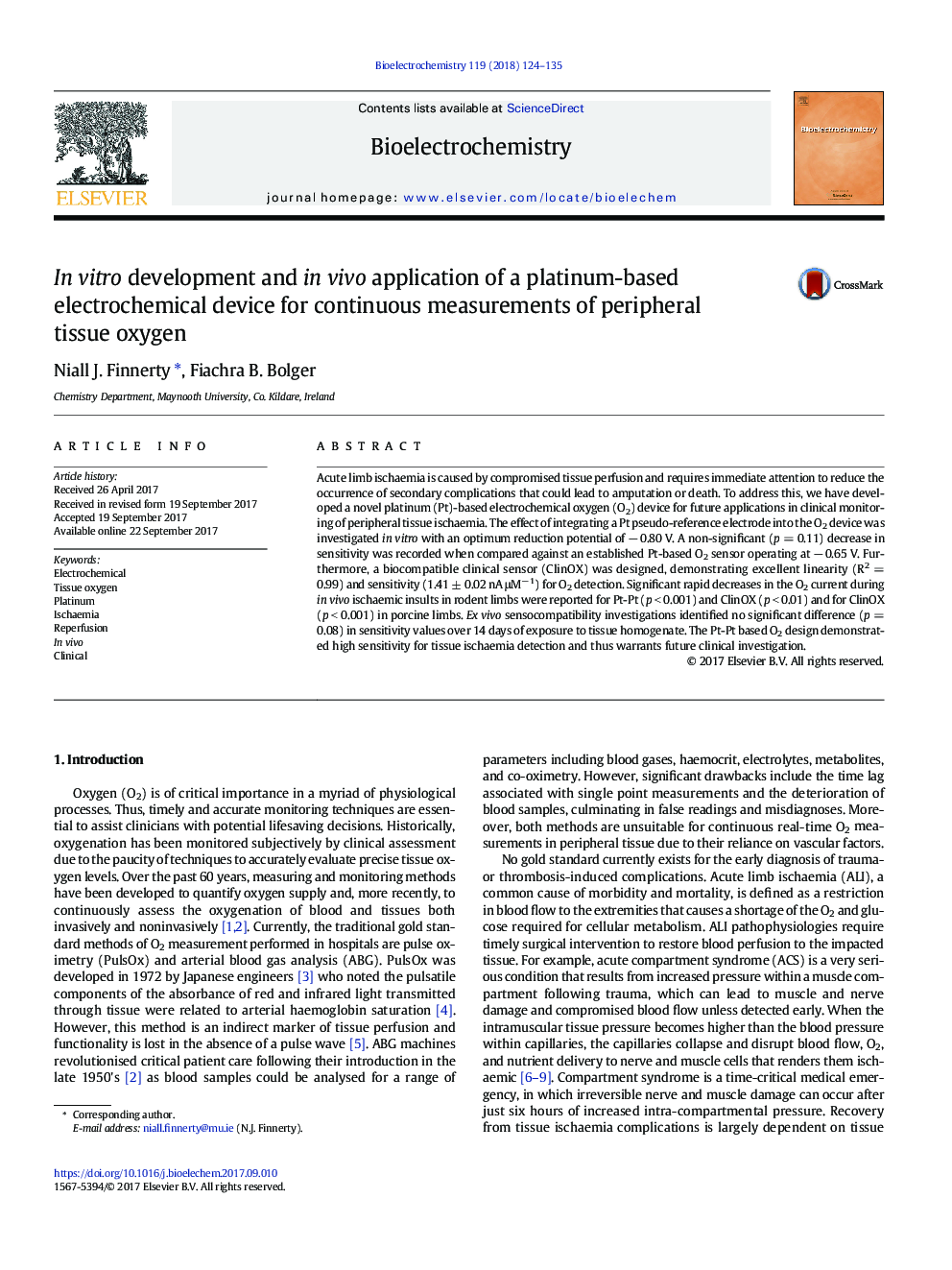| Article ID | Journal | Published Year | Pages | File Type |
|---|---|---|---|---|
| 5144958 | Bioelectrochemistry | 2018 | 12 Pages |
Abstract
Acute limb ischaemia is caused by compromised tissue perfusion and requires immediate attention to reduce the occurrence of secondary complications that could lead to amputation or death. To address this, we have developed a novel platinum (Pt)-based electrochemical oxygen (O2) device for future applications in clinical monitoring of peripheral tissue ischaemia. The effect of integrating a Pt pseudo-reference electrode into the O2 device was investigated in vitro with an optimum reduction potential of â 0.80 V. A non-significant (p = 0.11) decrease in sensitivity was recorded when compared against an established Pt-based O2 sensor operating at â 0.65 V. Furthermore, a biocompatible clinical sensor (ClinOX) was designed, demonstrating excellent linearity (R2 = 0.99) and sensitivity (1.41 ± 0.02 nA μMâ 1) for O2 detection. Significant rapid decreases in the O2 current during in vivo ischaemic insults in rodent limbs were reported for Pt-Pt (p < 0.001) and ClinOX (p < 0.01) and for ClinOX (p < 0.001) in porcine limbs. Ex vivo sensocompatibility investigations identified no significant difference (p = 0.08) in sensitivity values over 14 days of exposure to tissue homogenate. The Pt-Pt based O2 design demonstrated high sensitivity for tissue ischaemia detection and thus warrants future clinical investigation.
Related Topics
Physical Sciences and Engineering
Chemistry
Electrochemistry
Authors
Niall J. Finnerty, Fiachra B. Bolger,
